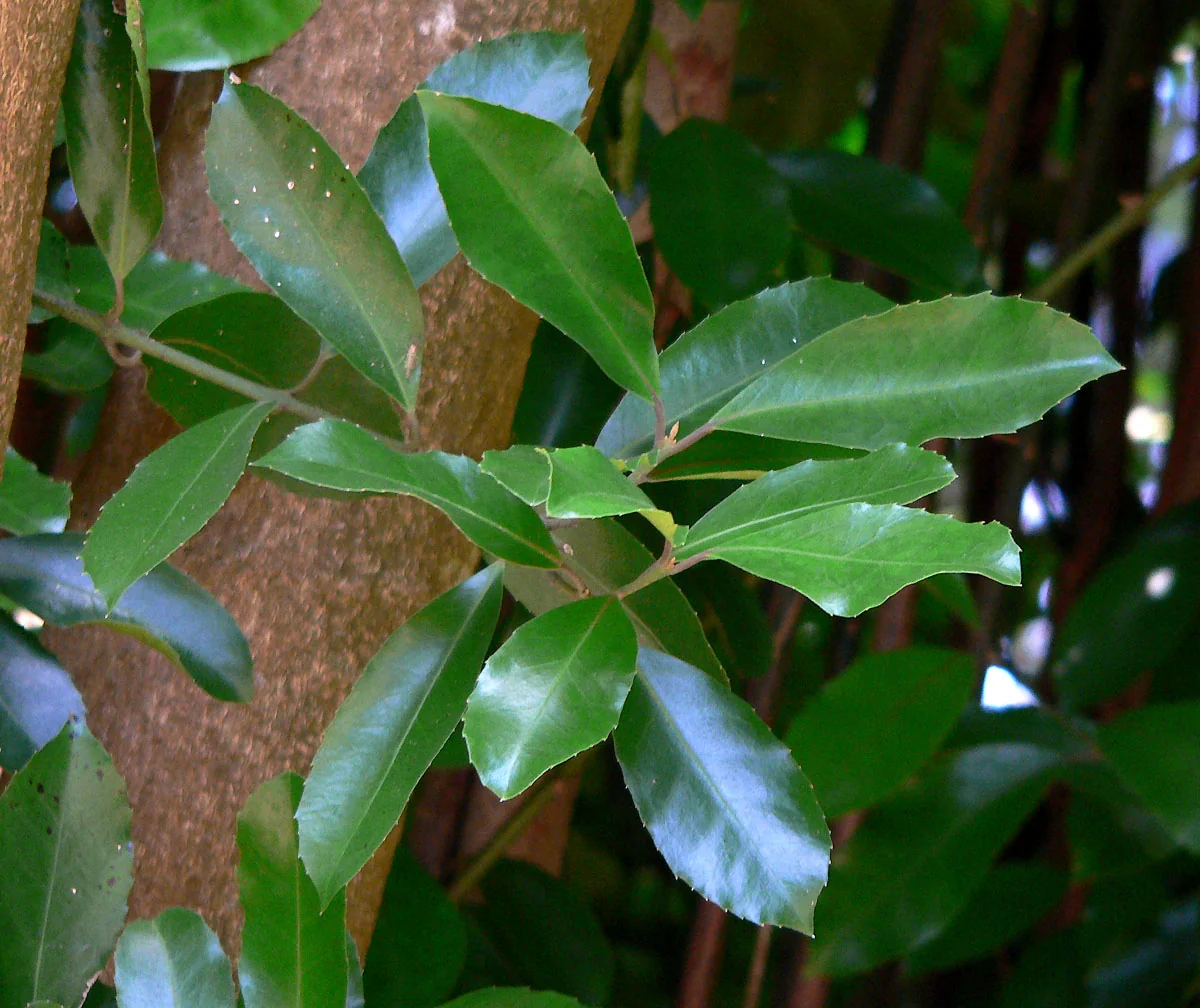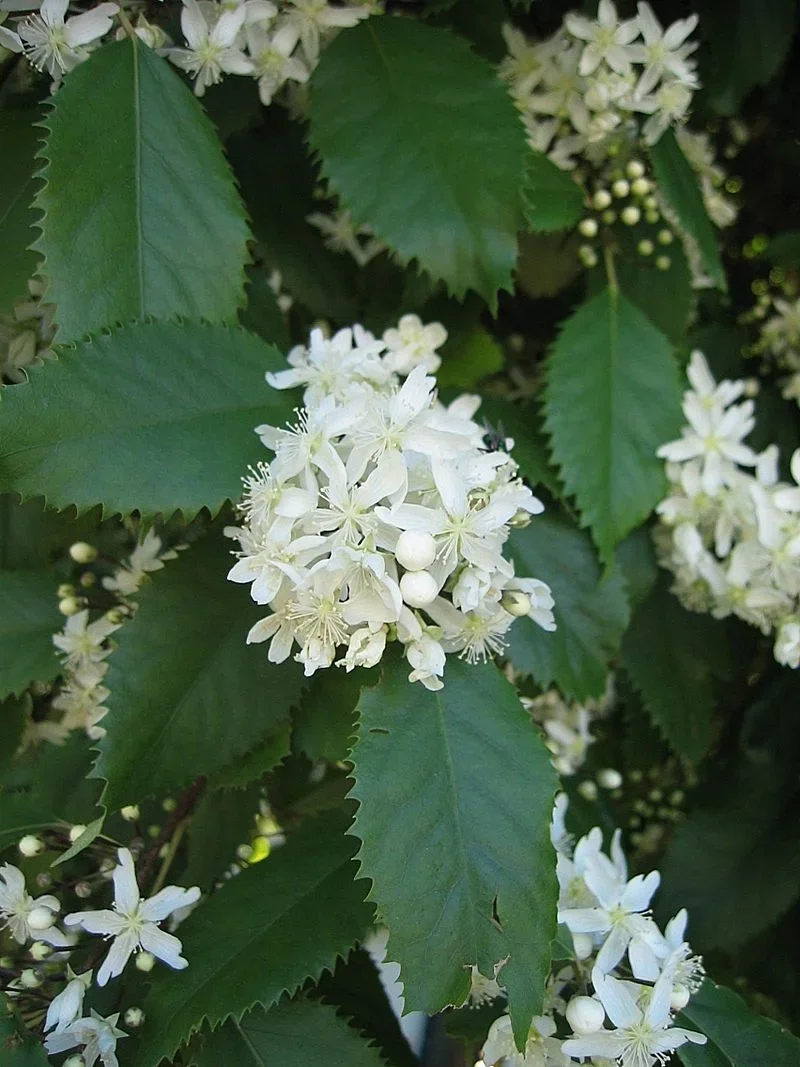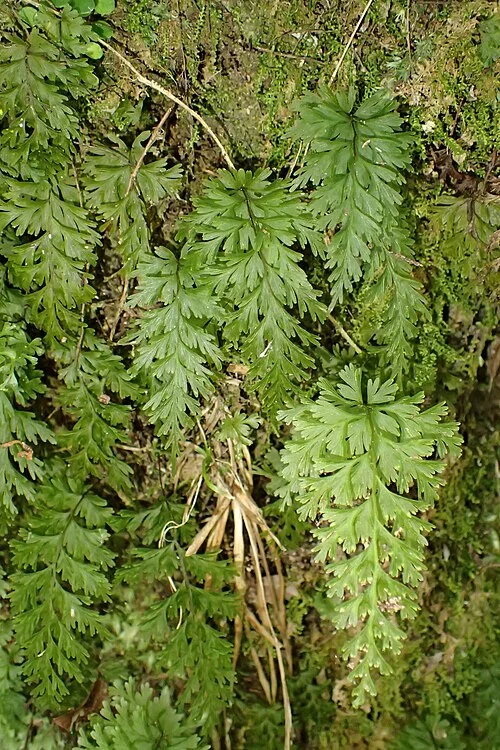
Pigeonwood
Hedycarya arborea
Pigeonwood ( Hedycarya arborea ), also known as Porokaiwhiri, is a graceful native New Zealand tree among New Zealand's native trees, celebrated for its attractive, glossy green leaves, fragrant flowers, and clusters of bright orange-red berries. This medium-sized tree is endemic to the North Island and northern South Island, typically found in lowland and coastal forests. Its distinctive foliage and vibrant fruit make it a valuable addition to native plant gardens, providing year-round interest and attracting native birds. Pigeonwood is a resilient and aesthetically pleasing tree that adds a touch of natural elegance to any landscape, showcasing the rich biodiversity of New Zealand's forests.

Pigeonwood ( Hedycarya arborea ), also known as Porokaiwhiri, is a graceful native New Zealand tree, celebrated for its attractive, glossy green leaves, fragrant flowers, and clusters of bright orange-red berries. This medium-sized tree is endemic to the North Island and northern South Island, typically found in lowland and coastal forests. Its distinctive foliage and vibrant fruit make it a valuable addition to native plant gardens, providing year-round interest and attracting native birds. Pigeonwood is a resilient and aesthetically pleasing tree that adds a touch of natural elegance to any landscape, showcasing the rich biodiversity of New Zealand's forests.
Quick Facts
| Scientific Name | Hedycarya arborea |
|---|---|
| Common Name | Pigeonwood, Porokaiwhiri |
| Family | Monimiaceae |
| Height | Up to 15 m |
| Spread | Up to 5 m |
| Light | Partial shade to full shade |
| Soil | Moist, well-drained, fertile soils |
| Water Needs | Moderate to high |
| Frost Tolerance | Low to Moderate |
| Salt Tolerance | Low |
| Growth Rate | Medium |
| Lifespan | Long |
Climate Best Suited to
Pigeonwood ( Hedycarya arborea ) is native to the North Island and northern South Island of New Zealand, typically found in lowland and coastal forests. It thrives in mild, temperate climates with high humidity and consistent rainfall. It prefers sheltered locations, protected from strong winds and harsh frosts. Its natural habitat includes forest understoreys and damp gullies, indicating a preference for cooler, shadier conditions. It can be successfully cultivated in similar temperate regions, provided it has good drainage and protection from extreme heat or prolonged severe frosts.
Regional Suitability
| City | Climate Suitability |
|---|---|
| Whangārei | Ideal |
| Auckland | Ideal |
| Hamilton | Ideal |
| Tauranga | Ideal |
| Rotorua | Ideal |
| Gisborne | Ideal |
| New Plymouth | Ideal |
| Napier | Ideal |
| Whanganui | Ideal |
| Palmerston North | Ideal |
| Wellington | Ideal |
| Nelson | Ideal |
| Christchurch | Ideal |
| Dunedin | Ideal |
| Invercargill | Ideal |
Natural Habitat
North Island Distribution
Understand the natural habitat of Pigeonwood ( Hedycarya arborea ), which is found throughout the North Island and northern South Island of New Zealand, in lowland and coastal forests. This section details its geographical distribution, preferred environmental conditions, and the types of ecosystems where it naturally occurs.
- Widespread across the North Island and northern South Island.
- Found in lowland and coastal forests, often in damp gullies and understoreys.
- Prefers sheltered sites with good air circulation.
- Thrives in partial to full shade.
Its broad habitat range highlights its adaptability and resilience, making it a fascinating subject for ecological study.
Plant Conservation
Hedycarya arborea, also known as pigeonwood or porokaiwhiri, is currently classified as "Not Threatened" in its conservation status. This status has been consistent in assessments from 2004, 2009, 2012, 2017, and 2023 by the New Zealand Plant Conservation Network. Regionally, for example in Auckland, it is also considered "Regionally Not Threatened" as of 2025.
Growing Requirements
Soil Requirements
Pigeonwood prefers moist, well-drained, and fertile soils. It naturally grows in humus-rich forest soils. Amend heavy soils with compost or other organic matter to improve drainage and fertility. A neutral to slightly acidic pH is ideal. Ensure consistent moisture, especially during dry periods.
- Prefers moist, well-drained, fertile soils.
- Benefits from organic matter enrichment.
- Ideal pH: neutral to slightly acidic.
- Avoid waterlogged conditions.
Light Requirements
Pigeonwood thrives in partial to full shade. It is sensitive to direct, harsh sunlight, which can scorch its leaves. Plant it in a sheltered spot under larger trees or on the shaded side of a building where it receives dappled light or indirect sun throughout the day. It can tolerate more sun in cooler climates if kept moist.
- Prefers partial to full shade.
- Avoid direct, harsh sunlight.
- Ideal for underplanting or sheltered positions.
Water Requirements
This tree requires consistent moisture, especially during dry periods and its establishment phase. The soil should be kept moist but not waterlogged. Regular watering is crucial for healthy growth and abundant fruiting. Reduce watering slightly during cooler winter months.
- Requires consistent moisture.
- Keep soil moist, but ensure good drainage.
- Water more frequently during dry spells.
Planting Guide
Best Time to Plant
The best time to plant Pigeonwood is during autumn or spring, when temperatures are mild and rainfall is more consistent. This allows the tree to establish its root system before the extremes of summer heat or winter cold.
Choosing a Location
Select a site with partial to full shade and moist, well-drained, fertile soil. Pigeonwood is ideal for planting in the understorey of larger trees, in sheltered garden beds, or as a specimen tree in a protected location. Ensure it has adequate space for its mature size.
Planting Steps
- Dig a hole twice the width of the root ball and the same depth.
- Gently remove the tree from its container, being careful not to disturb the roots.
- Place the tree in the hole, ensuring the top of the root ball is level with the surrounding soil.
- Backfill with amended soil, firming gently around the base of the tree.
- Water thoroughly immediately after planting to settle the soil.
- Apply a layer of organic mulch to help retain moisture and suppress weeds, keeping it away from the trunk.
Initial Care
Water regularly during the first 6-12 months to help establish a strong root system. Once established, Pigeonwood is reasonably low maintenance and requires less frequent watering. Protect young trees from strong winds and severe frosts if necessary.
Ecological Role
Forest Ecosystem Importance
The ecological importance of Pigeonwood ( Hedycarya arborea ) within its native New Zealand ecosystems is significant. Its berries provide a crucial food source for native birds, particularly the kererā, which in turn aid in seed dispersal, playing a key role in forest regeneration.
- Berries are a crucial food source for native birds (e.g., kererā).
- Aids in seed dispersal and forest regeneration.
- Provides shelter for other forest species.
- Contributes to biodiversity in lowland and coastal forests.
As an endemic species, it is an integral part of the unique biodiversity that has evolved in New Zealand, supporting the delicate balance of its natural habitats.
Uses and Significance
Garden Uses
- Excellent specimen tree for larger gardens.
- Suitable for native forest restoration and revegetation.
- Provides year-round interest with evergreen leaves and colourful berries.
- Attracts native birds, especially kererā (New Zealand pigeon), to its fruit.
Landscaping Applications
Garden Design Uses
Pigeonwood ( Hedycarya arborea ) is a highly attractive and versatile tree for various landscaping applications, particularly in native and shaded gardens. Its graceful form and vibrant berries make it a valuable asset.
- Ideal as a specimen tree for larger gardens and parks.
- Excellent for native forest restoration and revegetation projects.
- Provides year-round interest with evergreen leaves and colourful berries.
- Suitable for mass plantings or as an accent plant.
Its ability to thrive in sheltered, shaded conditions and its aesthetic appeal make it a popular choice for creating lush and beautiful native landscapes.
Seasonal Care Calendar
Spring
New growth emerges, and fragrant flowers may appear. This is an ideal time for planting new Pigeonwood specimens. Ensure consistent moisture for young trees and protect them from strong winds if necessary. A light feed with a balanced slow-release fertilizer can encourage vigorous growth.
- Ideal time for planting.
- Ensure consistent moisture for new trees.
- Light fertilization if needed.
Summer
Pigeonwood is actively growing and flowering during summer, followed by the development of berries. Consistent watering is crucial, especially during dry spells, to prevent stress. Monitor for pests and diseases, though it is generally quite resilient.
- Active growth and flowering.
- Consistent watering is essential.
- Monitor for pests and diseases.
Autumn
Berries ripen and become prominent in autumn, providing a valuable food source for native birds. This is another good time for planting, allowing roots to establish before winter. Minimal care is required for established trees, but ensure they remain adequately hydrated.
- Berries ripen, attracting birds.
- Good time for planting.
- Ensure adequate hydration.
Winter
Pigeonwood is evergreen and provides year-round interest. It is moderately frost-tolerant, but in very cold regions, young trees may benefit from some protection. Ensure good drainage to prevent root issues in wet conditions.
- Evergreen, provides year-round interest.
- Protect young trees from severe frost.
- Ensure good drainage.
When to Prune and How Much
Minimal Pruning
Pigeonwood generally requires minimal pruning to maintain its natural form. The primary reason for pruning is to remove dead or damaged branches, or to shape the tree as desired. Its natural growth habit is often quite attractive, so extensive pruning is rarely needed.
- Remove dead or damaged branches as needed.
- Light shaping to maintain desired form.
- Best done in late winter or early spring before new growth.
- Use clean, sharp tools.
Avoid heavy pruning, as this can stress the tree. Allow it to develop its natural, graceful canopy.
How to Grow Pigeonwood
Pigeonwood, also known as Porokaiwhiri, is a graceful native New Zealand tree celebrated for its attractive, glossy green leaves, fragrant flowers, and clusters of bright orange-red berries. This medium-sized tree is a valuable addition to native plant gardens, providing year-round interest and attracting native birds. While it is a resilient and aesthetically pleasing tree, successful cultivation requires attention to its specific needs, particularly regarding moist, well-drained soil, and protection from harsh frosts when young. Understanding its propagation methods is key to successfully growing this delightful species.
From Seed
Propagating Pigeonwood from fresh seed is a viable method, though germination can be slow and may require stratification. Collect ripe berries in late autumn or early winter. Clean the seeds thoroughly to remove any fleshy pulp. Sow the seeds in a tray filled with a well-draining seed-raising mix, lightly covering them. The seeds typically require a period of cold stratification (e.g., refrigerate for 2-3 months) to break dormancy. Maintain consistent moisture in the seed tray and keep it in a warm, sheltered location. Germination can take several weeks to months after stratification. Once seedlings have developed a few true leaves, they can be potted into individual containers and grown in a sheltered environment before planting out.
From Cuttings
Semi-hardwood cuttings are a reliable method for propagating Pigeonwood, ensuring that new plants retain the exact characteristics of the parent. Take 10-15 cm cuttings from healthy, semi-hardwood stems in late summer or early autumn. Remove the lower leaves and dip the cut end in a rooting hormone. Insert the cuttings into a well-draining propagation mix (e.g., sand and perlite). Keep the cuttings in a warm, humid environment, out of direct sunlight, perhaps under a plastic dome or in a propagator. Rooting typically occurs within 8-12 weeks. Once rooted, the new plants can be potted on and grown in a sheltered environment until they are ready for planting.
Pests and Diseases
Pigeonwood is generally a robust tree, but it can be susceptible to certain pests and diseases, especially if not grown in optimal conditions.
Common Pests
- Aphids: Can infest new growth. Treat with insecticidal soap or remove manually.
- Scale Insects: May be present on stems and leaves. Treat with horticultural oil or appropriate insecticides.
Common Diseases
- Sooty Mould: Often associated with scale insect infestations, it can cover leaves and reduce photosynthesis. Address the underlying pest issue.
- Root Rot: Caused by overwatering or poor drainage. Ensure well-drained soil.
Good garden hygiene, proper watering, and adequate air circulation are key to preventing most pest and disease issues. Regular inspection will help catch problems early.
Cultural Significance
Hedycarya arborea, commonly known as pigeonwood or by its Māori name porokaiwhiri, holds significant cultural importance, particularly for Māori. The name "porokaiwhiri" itself reflects this, with "poro" meaning ball, "kai" meaning food, and "whiri" referring to a flock of birds, indicating that its fruit is a food source for birds.
Traditional Use of Hedycarya Arborea Wood for Musical Instruments:
- Pahū (drums or gongs): The wood was fashioned into these instruments.
- Pūrerehua (bull-roarer): This instrument was also made from porokaiwhiri.
- Pākuru: A percussion instrument consisting of two porokaiwhiri rods, where a longer rod was held in the mouth and a shorter one tapped a rhythm on it.
- Titi: Batons used in the stick-game called tititorea were made from pigeonwood.
- Rehu (flutes): Some flutes were also made from pigeonwood.
- Mouthpieces for shell trumpets: The wood was used for this purpose due to its sonorous nature.
Beyond musical instruments, Hedycarya arborea also played a role in sacred rituals. A fire-stick made from porokaiwhiri was sometimes chosen to light a sacred fire. This fire was used to burn the first hair cut from a child's head, a practice intended to destroy the hair and prevent its use for evil purposes (mākutu), as the head was considered sacred.
Bonus Tip
A Pigeon's Delight?
The common name 'Pigeonwood' comes from the fact that the native New Zealand pigeon, the kererā, is fond of its berries. However, it is now thought that the berries are not a preferred food source, but rather a 'famine food' that the birds will turn to when other, more desirable, foods are scarce. Interestingly, after gorging on the fruits, the birds can become drowsy!







